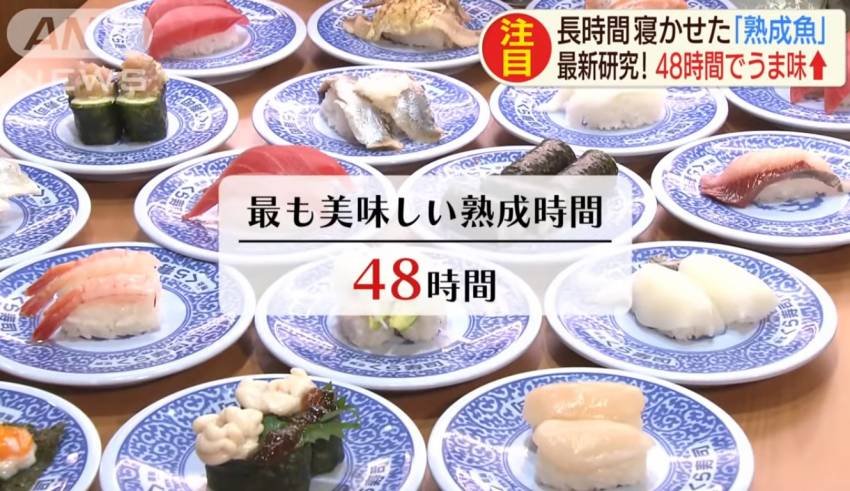
“Aged maguro” sounds so much better than “old tuna.”
When it comes to sushi and sashimi, many say that for the best taaste you should use the absolute freshest fish. However, when it comes to maguro (tuna), apparently, this isn’t necessarily the case.
At a press conference on Thursday (Nov. 7) the popular kaiten-zushi (“revolving sushi”) chain Kura Sushi (Kura-Zushi) announced that new research they had been involved with had uncovered the optimal amount of time for aging maguro: 48 hours.
Maguro, or bluefin tuna in English, is one of the most popular types of fish used in sushi and sashimi. Though often served fresh, in recent years “aged maguro” has been experiencing a sharp increase in popularity.
In a report by ANN News, a representative of Kura Sushi explained that since changing from regular maguro to maguro that has been aged for 36 hours, their total sales of maguro has increased by 50%. Today, Kura Sushi sells about 70 million plates of aged maguro sushi each year.
The conclusion that 48 hours is the best amount of time for aging maguro was reached through a joint research project with between Kura Sushi and the University of Tokyo’s Graduate School.
The research indicates that the 48 hour aging process increases the amount of umami present in the maguro by 40%. Umami is one of the five categories of taste and corresponds to the savory flavor associated with glutemates. In other words, more umami, arguably means, a richer and deeper flavor.
The reason for the extra umami is that as the fish ages enzymes are released that both help break down the proteins in the fish and unlock a richer flavor profile. Though the specifics are different, what happens to maguro when it is aged is comparable to what happens to beef when it is aged.
After preparing the cuts of maguro, they are aged for 48 hours in a refrigerated space. Once properly aged the fish is then frozen so it can be shipped. The freezing process maintains the maguro at the optimal level of aging, thus ensuring that the consumer is able to enjoy aged maguro at its most umami-rich point.
ANN News is also reporting that a way to mass produce aged maguro has been developed. This is the first time such a method has ever been successfully developed.
The new and improved aged maguro began being offered at Kura Sushi locations on Friday (Nov. 8). The price for a single plate of maguro will remain the same at 100 yen (~$1.00 USD).
Nikkei Keizai Shinbun reports that Kura Sushi and the University of Tokyo plan to continue their joint research. Future research will focus on other types of fish and umami levels.
48 hour aged maguro is now on sale at the Kinki University Fish Lab in Tokyo’s Ginza district. There are also plans to sell it at supermarkets across Japan.
You can watch the ANN News report on this story via the video below.
Source: ANN News, Nippon Keizai Shinbun
Image: 「熟成魚」ブームの兆し 48時間でうま味成分4割増(19/11/07) (ANN News)

















